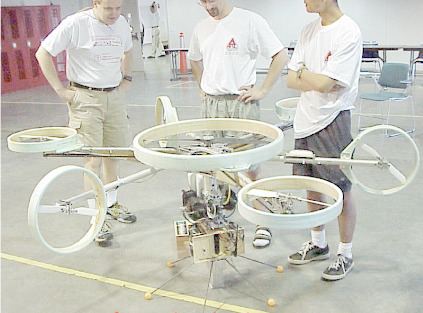 | ||
A roboticist is a person who designs, builds, programs, and experiments with robots. Since robotics is a highly interdisciplinary field, roboticists often have backgrounds in a number of disciplines including computer science, mechanical engineering, electrical engineering, physics, human–computer interaction and interaction design. Roboticists often work for university, industry, and government research labs, but may also work for startup companies and other entrepreneurial firms. Amateur Robotics is also a growing hobby all over the world.
Contents
Science, engineering, art, and invention
Robotics is unusual in combining elements of science, engineering and art. Many roboticists are also deeply involved in the creative arts such as literature, drama, music and film. Some roboticists have a background in the arts and are drawn to robotics as a medium for expression. The acclaimed Czech playwright Karel Capek (1890-1938) made the first use of the word ‘robot’, from the Czech word for forced labor or serf. Later the Three Laws of Robotics were written by Isaac Asimov.
Work in robotics more closely resembles invention rather than pure science or pure engineering. Science refers to a system of acquiring knowledge. Engineering is the design, analysis, and/or construction of works for practical purposes. Invention is about creating something new, often at the boundaries of scientific and technological knowledge.
Robotics development
As with all technological projects, the specific processes used in robotics development vary depending on the individuals and institutions involved. However, a key feature of most successful robotics efforts is the use of early prototyping and exploratory development of potential solutions.
Interactivity
In robotics, the interactions between mechanical, electrical, and software systems and the complexities of the real world are highly unpredictable. As a result, the ability to iterate quickly through potential solutions is highly valued by roboticists. Often, roboticists discover that the problems they are trying to solve are either much easier than expected, resulting in faster progress, or much harder—requiring that they experiment with many different potential techniques before finding a suitable solution.
While system engineering is a mainstay of the modern aerospace industry, the field of robotics is more similar to the early days of flight when the Wright Brothers built their Flyer and the barnstormers performed aviation feats to introduce the public to the wonders of flight. In robotics development, as in the early days of flight, the common approach is "Let's try it and see if it works."
Robotics careers
The robotics industry is booming as new applications become practical for consumers, the military, industrial, entertainment industry, medical applications, space, and search and rescue robots. Thanks to high school robotics programs, such as FIRST, the latest generation of students who grew up building robots is entering the workforce. The field of robotics continues to grow, attracting individuals who specialize in a wide variety of robotics and robotics-related fields. The following is a list of a few of those people currently at the top of their field in countries all over the world.
Robotics hobbies
The Robo-One games in Japan and the Robogames in the US have inspired a new growing hobby of kit built or home built and designed robots. Many of the advances in robotics are occurring in people's home garages and workshops like the early days of aviation or computers.
